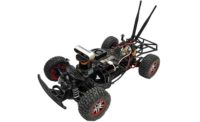Most major cities in the world are located on or near a major body of water, either a coast, a large lake or a river. That’s because they originated as water-borne trading posts centuries ago.
Waterways that were bustling with boats in the past could see history repeat itself if engineers at the Massachusetts Institute of Technology (MIT) have their way. They’re developing a fleet of autonomous boats that feature high maneuverability and precise control.
The goal is to efficiently move people and goods while reducing road congestion. In addition, the driverless boats could be adapted to perform vital city services, such as overnight garbage collection instead of during busy daylight hours.
The autonomous boat concept is the brainchild of a collaborative effort by MIT’s Computer Science and Artificial Intelligence Laboratory (CSAIL) and the Senseable City Lab in the Department of Urban Studies and Planning.
The engineers tested their idea on the canals of Amsterdam. A prototype boat cruised around the city’s waterways moving forward, backward and laterally along a preprogrammed path. The boat design is currently being tested closer to home in the Charles River, which runs beside the MIT campus in Cambridge, MA.
The boat is a rectangular shape, instead of traditional kayak or catamaran shapes, to allow the vessel to move sideways and to attach itself to other boats. Four thrusters are positioned in the center of each side, instead of at the four corners, generating forward and backward forces. This makes the boat agile and efficient.
To make the 4-by-2-meter boats, engineers used additive manufacturing technology, printing 16 separate hull sections that were assembled together. The completed hull was then sealed by adhering several layers of fiberglass.
Integrated onto the hull are a power supply, Wi-Fi antenna, GPS, a minicomputer and a microcontroller. For precise positioning, the researchers incorporated an indoor ultrasound beacon system and outdoor real-time kinematic GPS modules, which allow for centimeter-level localization. An inertial measurement unit (IMU) module monitors the boat’s yaw and angular velocity, among other metrics.
The MIT engineers also created a method that enables the boat to track its position and orientation more quickly and accurately. To do so, they developed an efficient version of a nonlinear model predictive control (NMPC) algorithm, which is used to control and navigate robots within various constraints.
“Simplified nonlinear mathematical models account for a few known parameters, such as drag of the boat, centrifugal and Coriolis forces, and added mass due to accelerating or decelerating in water,” says Daniela Rus, director of CSAIL. “An identification algorithm identifies any unknown parameters as the boat is trained on a path.
“That accuracy is thanks, in part, to the boat’s onboard GPS and IMU modules, which determine position and direction, respectively, down to the centimeter,” explains Rus. “The NMPC algorithm crunches the data from those modules and weighs various metrics to steer the boat true. The algorithm is implemented in a controller computer and regulates each thruster individually, updating every 0.2 seconds.
“The controller considers the boat dynamics, current state of the boat, thrust constraints, and reference position for the coming several seconds, to optimize how the boat drives on the path,” Rus points out. “We can then find optimal force for the thrusters that can take the boat back to the path and minimize errors.”
The next challenge is to develop adaptive controllers to account for changes in mass and drag of the boat when transporting people and goods. The engineers also plan to refine the controller to account for wave disturbances and stronger currents.



